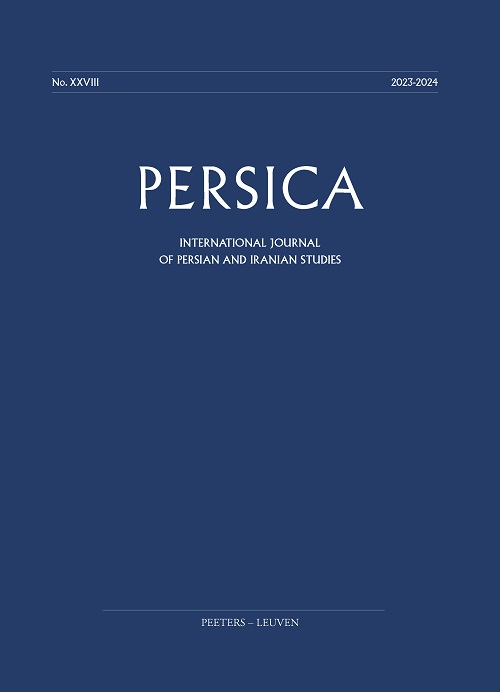 previous article in this issue previous article in this issue | next article in this issue  |

Preview first page |
Document Details : Title: Hāfiz's Sāqīnāmah Subtitle: The Genesis and Transformation of a Classical Poetic Genre Author(s): SHARMA, Sunil Journal: Persica Volume: 18 Date: 2002 Pages: 75-83 DOI: 10.2143/PERS.18.0.493 Abstract : The study of non-panegyric poetry in classical Persian poetry seldom ventures beyond the privileged forms of the ġazal, considered the love lyric or mystical poem par excellence, or the masnavī, the vehicle for narratives of romantic, epic, philosophical and mystical subjects. In reality, classical poets utilized a whole host of sub-genres of poetry that allowed them to experiment with poetic forms and constantly challenge the parameters of established genres. The intertextual nature of Persian poetry, combined with the allegorical technique that allowed a set repertoire of images and topoi to be used in various genres, allowed for a great number of hybrid texts. The Sāqīnāmah is a genre of classical Persian poetry that enjoyed immense popularity in Persianate literary cultures, especially during the sixteenth and seventeenth centuries, when many court poets composed such poems. It provides a useful case study of the transformation of a genre of classical Persian literature from its somewhat obscure origins to a hybrid and highly flexible form of panegyric poetry. Its supposed “originator” was none other than Hāfiz (d. 1389), the poet-seer of Shiraz, whose Sāqīnāmah was received and refashioned in innovative ways by later poets. A critical examination of the genesis of the Sāqīnāmah and its transformation will illuminate the organic connection between various forms and genres in Persian poetry and enable us to have a broader view of the dynamic nature of the canon of classical Persian literature. |
|


